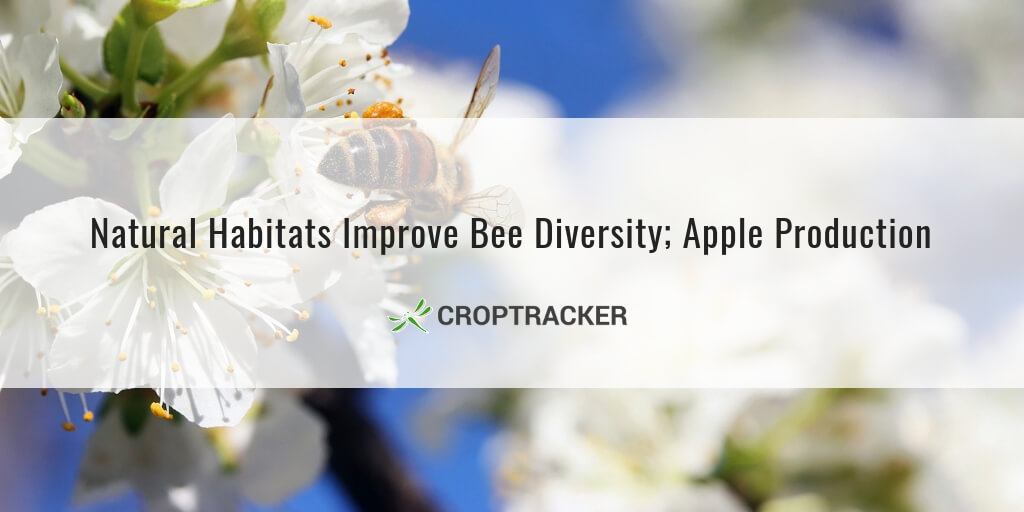A Cornell study has found that apple orchards surrounded by natural habitats are visited by a more diverse collection of bee species than those surrounded by agricultural lands. The study found that production improved in orchards surrounded by natural habitats; as apple production suffers when fewer, more closely-related species of bees pollinate an orchard.
The study drew from 10 years of data from 27 New York state apple orchards, and was funded by the USDA and the Atkinson Center for a Sustainable Future.
Different species of bees exhibit different behaviors in how and when they pollinate flowers. Some species approach from the side, others from the top, and they each may feed at different times of day and with varied frequencies. With several different species visiting an orchard, the apple flowers stand a better chance of becoming more completely pollinated.
“Orchards that have bee communities that are more closely related to each other did worse in terms of their fruit production, and the communities that are more broad across the phylogeny [the branching diagram or "tree" researchers compiled to show the evolutionary relationships among the bees] did much better,” said Heather Grab, Ph.D. ’17, the paper’s first author and a postdoctoral researcher in the lab of Katja Poveda, associate professor of entomology and a co-author of the study.
Higher pollination rates lead not only to higher orchard productivities, but better quality fruit as well. Organs in apple flowers must receive a certain number of pollen grains in order to develop a full complement of seeds. When seeds do well, the tissue that supports those seeds, the fleshy part of the fruit, is also more fully developed. “If only half of the seeds mature fully, then the fruit is misshapen,” which in turn affects weight and salability, says Grab.
Agriculture-dominated landscapes are unsuitable for many species of bees. Common species like the mining bee (Andrena regularis), bumblebees (from the genus Bombus), and sweat bees (Lassioglossum) are able to tolerate such landscapes; but many other species of efficient apple pollinators do not do well in agriculture-dominated environments.
What can growers do to improve pollination in orchards surrounded by agricultural lands? Bordering crops with wildflower plantings is becoming an increasingly popular method to attract pollinators and pest predators - but it's not the right method for all growers. To read more, check out our recent blog post on the subject: Study Examines Wildflower Borders & How Best To Use Them.
Growers may wish to conduct their own longitudinal studies to assess the efficacy of experimental treatments and conditions - like wildflower borders - by tracking changes in yields. In the past, this would have been a strenous effort; with hand-drawn calculations and scores of paperwork and notes to dig out of storage and make sense of. Today, crop management software like Croptracker lets growers easily accumulate, store, and view long-term data. Capable of generating over 50 reports, Croptracker can make sense of years of records instantaneously and let growers track trends over time. This lets growers accurately assess how different management practices have affected their results and make more informed decisions for their farm.
Interested in learning more about any Croptracker feature? Click here or head over to our Knowledge Base, where you'll find step-by-step tutorials as well as common troubleshooting tips and more. And as always, if you're ever stuck, never hesitate to e-mail us at support@croptracker.com or Live Chat with us by clicking the green speech bubble ![]() in your bottom right-hand corner. We're always happy to help you let Croptracker make your farm become more efficient, safe, and profitable!
in your bottom right-hand corner. We're always happy to help you let Croptracker make your farm become more efficient, safe, and profitable!
| Missed Last Week's Blog Post? The Future of Fresh Produce in the Digital Age |


